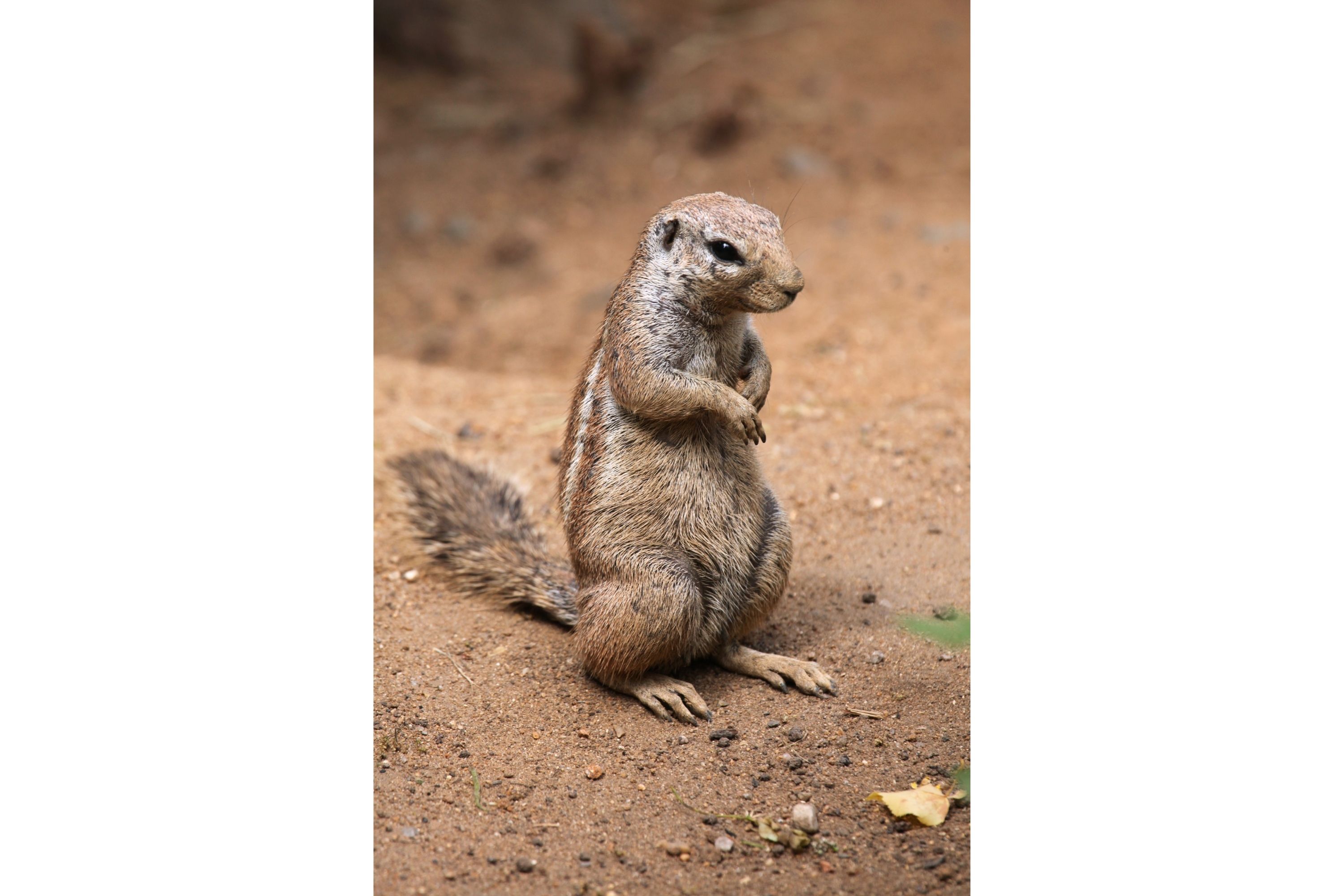Cape ground squirrel
(Xerus inauris)

Description
The Cape ground squirrel or South African ground squirrel(Geosciurus inauris)is found in most of the drier parts of southern Africa from South Africa, through to Botswana, and into Namibia, including Etosha National Park. The name Cape ground squirrel is somewhat misleading as it actually has a much wider area of habitation. This common name may have been arrived at to distinguish it from a tree squirrel (the eastern grey squirrel) found around Cape Town, which was imported from Europe by Cecil John Rhodes. The Cape ground squirrel has black skin with a coat made of short stiff hairs without underfur. The fur is cinnamon on the back while the face, underbelly, sides of neck and ventral sides of limbs are white.The sides of its body each have a white stripe that stretches from the shoulders to the thighs. The eyes are fairly large and have white lines around them. The pinnae are small. The tail is flattened on the back and underside and is covered with white hair and two black bands at the base. The Cape ground's sexual dimorphism is subtle. The belly and groin area of the females each have two pairs of mammary glands. The glans penis of the males are large with a prominent baculum.This species is notable for its impressively large testicles, which are roughly golf ball size, around 20% of the length of the head and body. Moulting occurs between August and September and between March and April, once per year. The Cape ground squirrel is widespread in southern Africa; through Botswana, South Africa, Lesotho, and Namibia. Its range covers most of Namibia but is absent from coastal regions and the northwest. Ground squirrels inhabit central and southwestern Kalahari in Botswana.In South Africa, it can be found in central and north-central areas. Cape ground squirrels live mainly in arid or semiarid areas. They prefer to live in veld and grasslands with hard ground. They can also be found in scrub along pans, on floodplains and in agricultural areas. Ground squirrel are generally active during the day and do not hibernate. They are burrowing animals that dig and live in clusters of burrows averaging around 700 square metres (7,500 sq ft) with 2-100 entrances. Burrow serve to protect the squirrel from extreme temperatures at the surface as well as predators. Nevertheless, most of the day is spent feeding at the surface.For thermoregulation, ground squirrels shade their head and back with their bushy tails.Dust bathing is also done.
Taxonomic tree:







